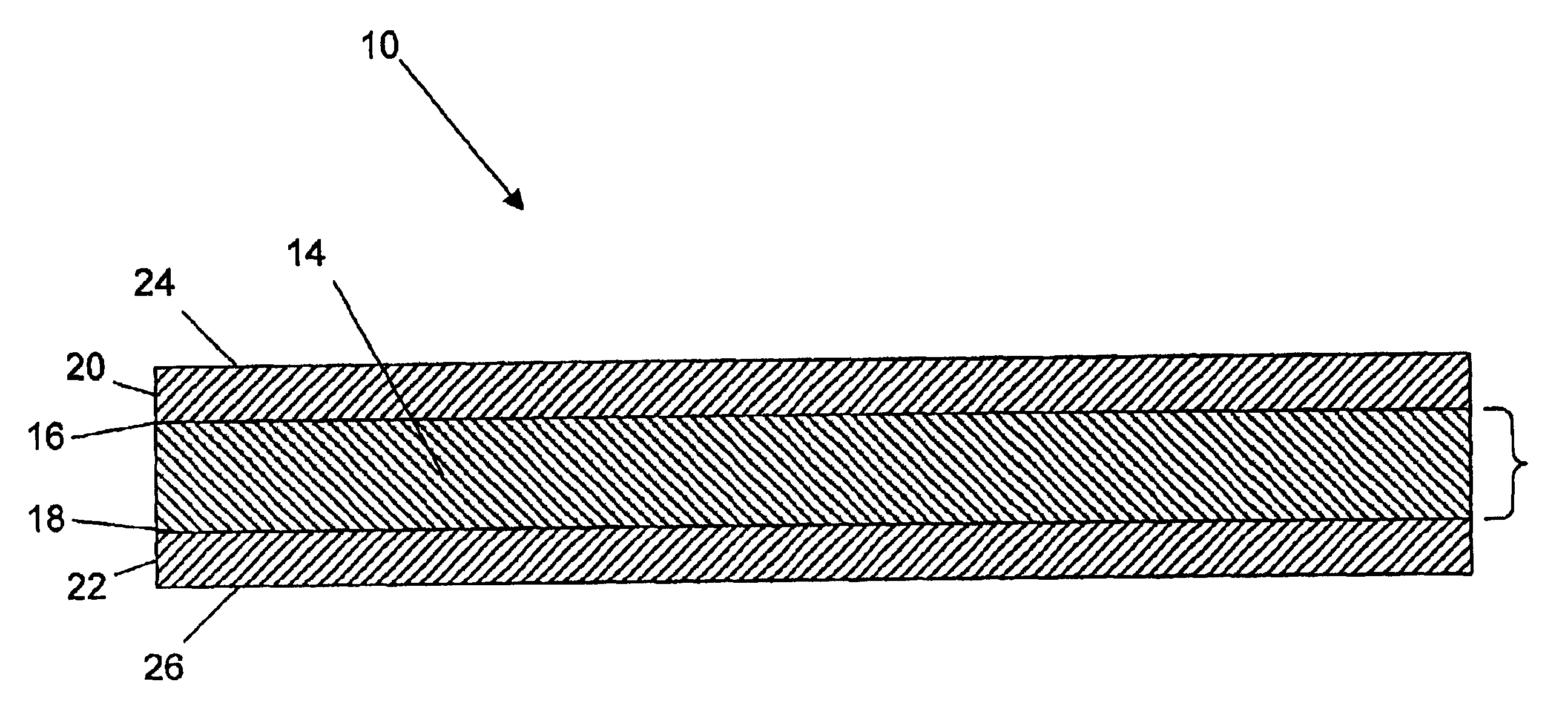Lightweight circuit board with conductive constraining cores
a technology of conductive constraining cores and circuit boards, which is applied in the direction of metallic pattern materials, synthetic resin layered products, natural mineral layered products, etc., can solve the problems of leadless chip carriers being especially susceptible to disengagement from the pwb, thermal management problems, fracture or fatigue,
- Summary
- Abstract
- Description
- Claims
- Application Information
AI Technical Summary
Benefits of technology
Problems solved by technology
Method used
Image
Examples
Embodiment Construction
Referring now to the drawings, a printed wiring board (“PWB”) 10″″ in accordance with an embodiment of the present invention is shown in FIG. 10. The PWB includes a first laminate 120, and a second laminate 122, multiple layers of prepreg 124 and multiple layers of metal 126. The PWB 10″″ contains circuits and is used for mounting integrated circuits (ICs) and components. The term circuit is used to describe an electrically conductive path between two or more points. Individual layers of the PWB can include circuits and a number of circuits on several layers of the PWB can be connected to create an overall PWB circuit. The layers on which circuits are located are often referred to as functional layers.
The laminates 120 and 122 comprise a carbon containing layer 14 sandwiched between a first layer of metal or other electrically conductive material 16 and a second layer of metal or other electrically conductive material 18. Both of the laminates 120 and 122 are electrically conductive...
PUM
| Property | Measurement | Unit |
|---|---|---|
| dielectric constant | aaaaa | aaaaa |
| dielectric constants | aaaaa | aaaaa |
| temperature | aaaaa | aaaaa |
Abstract
Description
Claims
Application Information
 Login to View More
Login to View More - R&D
- Intellectual Property
- Life Sciences
- Materials
- Tech Scout
- Unparalleled Data Quality
- Higher Quality Content
- 60% Fewer Hallucinations
Browse by: Latest US Patents, China's latest patents, Technical Efficacy Thesaurus, Application Domain, Technology Topic, Popular Technical Reports.
© 2025 PatSnap. All rights reserved.Legal|Privacy policy|Modern Slavery Act Transparency Statement|Sitemap|About US| Contact US: help@patsnap.com



